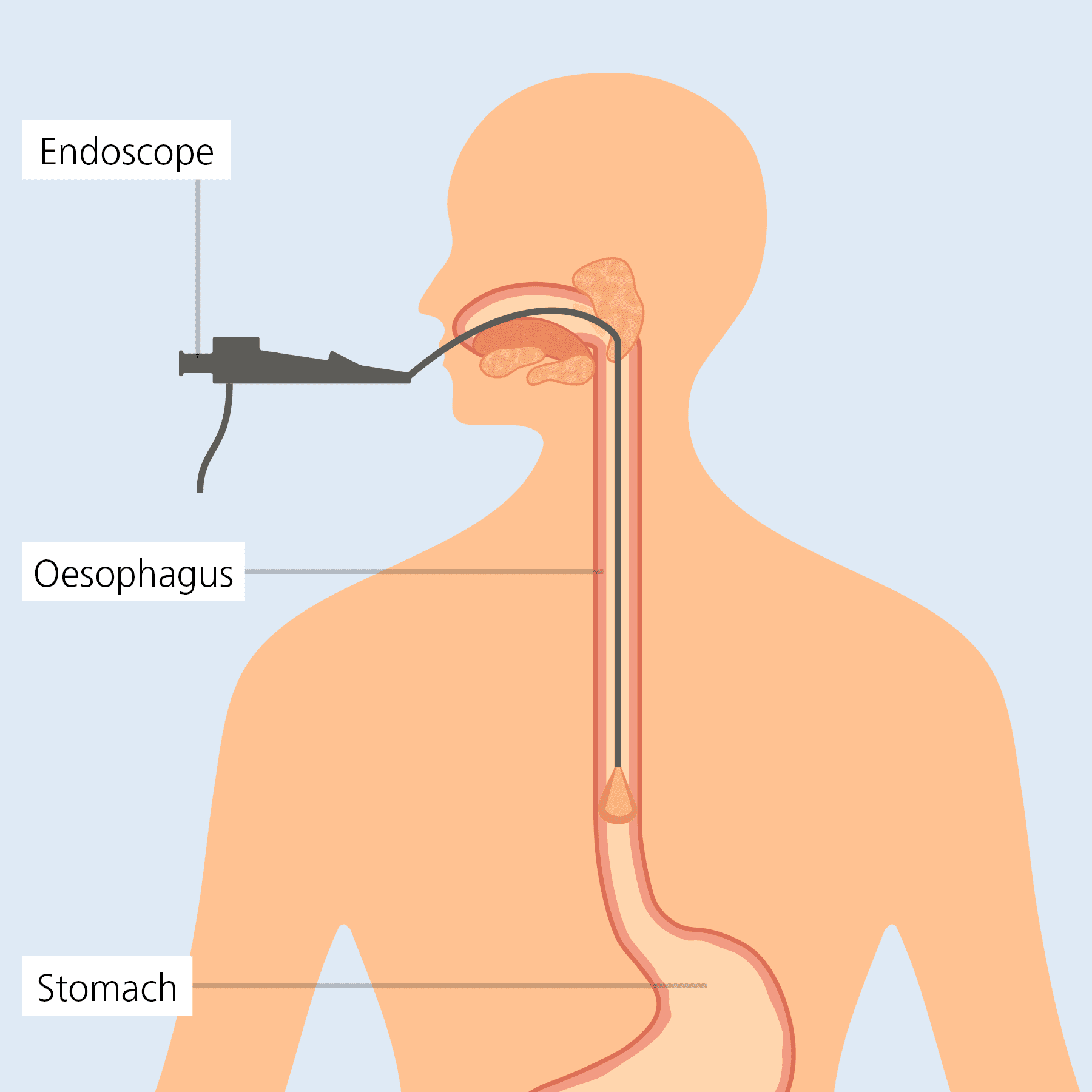SWALLOWING DIFFICULTIES:
EOSINOPHILIC ESOPHAGITIS?
SWALLOWING DIFFICULTIES:
EOSINOPHILIC ESOPHAGITIS?
SWALLOWING
DIFFICULTIES:
EOSINOPHILIC
ESOPHAGITIS?
Treatment of eosinophilic esophagitis with dilation
How effective is dilation of the oesophagus and how is it done?
If there are strictures, i.e. narrowing of the oesophagus, the diameter can be widened with dilation. This is performed with an endoscopic examination (gastroscopy). The oesophagus is then dilated, either with an inflatable balloon or by inserting a wire into the stomach and advancing bougies (candle-shaped plastic cylinders) with gradually increasing diameters into the oesophagus via the endoscope.

Endoscopic examination of the oesophagus
Dilation takes about 10 minutes and is performed under deep sedation. The scar tissue that is restricting the diameter of the oesophagus is mechanically dilated during the procedure. Symptoms improve significantly in about 75 % of patients who undergo dilation.
However, the procedure does not treat the underlying inflammation that is causing narrowing of the oesophagus and dilation will need to be repeated if new strictures form over time.
What are the side effects/limitations of dilation?
Pain when swallowing occurs in about half of the patients for 2-3 days following the procedure and responds well to conventional painkillers. The risk of serious complications, such as sustaining a hole (perforation) in the oesophagus, is relatively low (< 1%). A perforation of the oesophagus can be closed endoscopically with small metal staples or temporary stents, which will be removed after a few weeks. Operations to treat the complications of dilation procedures are only very rarely necessary.